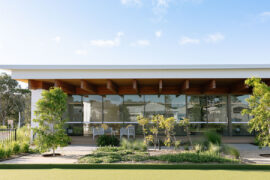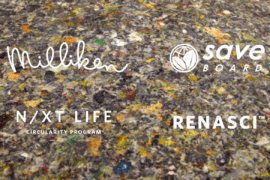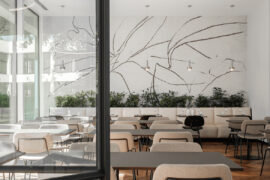What’s driving growth in the Australian hospitality and commercial sectors?

July 4th, 2018
There’s never been a better time to be in Australian construction. In 2017, the Australian Constructors Association’s Construction Outlook Survey reported that the total value of major project work across the country rose by 7.1% in the 2017-18, and will leap upward by another 6.8% in 2018. In particular, the report noted the contribution of commercial building and non-mining infrastructure sectors to this period of ongoing growth, highlighting these as two of the most prosperous sectors of Australian construction.
It’s easy to chalk this rapid industry expansion up to simply being the right place at the right time, but what’s really driving growth in the Australian commercial – and by extension, hospitality – sector merits closer consideration. In truth, there is no one single factor driving growth: rather, it’s a number of factors, all working together to create the ideal climate for growth.
In keeping with this spirit of collaboration, the inaugural FRONT event – to be held this August 9 and 10 at Carriageworks – celebrates working across the interdisciplinary divide. Over two action-packed days of seminars and networking, join the best and brightest in Australian hospitality and commercial design and delivery and get involved in one of the most exciting periods in Australian architecture and design to date. Learn from the best as they discuss the key factors driving Australian commercial design – a taste of which is provided below.
Mirroring the situation around the world, Australia is currently in the throes of massive population growth. According to the Australian Bureau of Statistics, the Australian population is increasing at a rate of approximately one person every 1 minute and 24 seconds (for those interested in the breakdown between natural growth and migration, this boils down to one birth every 1 minute and 43 seconds and one migration every 1 minute and 1 second).
The effects of this growth on the built environment are staggering. Increasing populations are heightening the demand for infrastructure, sending the national construction industry into a scramble to construct schools, housing, workspaces, and healthcare facilities. Growing populations have also elevated the demand for diverse hospitality spaces such as restaurants and eateries, hotels, and leisure spaces.
As Andrew Leigh writes for the Australian Financial Review, “Few countries are as hungry for overseas investment as Australia.” A strong national economy coupled with astounding levels of foreign investment – in 2016, $44 billion worth of it – mean that not only does Australia have the need and desire to build more, but it also has the money to do so.
FRONT will bring you shoulder-to-shoulder with all the right people in the industry, helping you foster meaningful connections with your peers and the people who can help turn your creative vision into a reality.
In urban geography, the term “doughnut city” (or “doughnut effect”) refers to a phenomenon by which the centre of a city becomes “hollow” as more people move to the urban periphery in search of cheaper, more readily available housing. As The Conversation reports, until the early 1990s, most Australian cities were doughnut cities, before doing a complete 180º and moving back toward a dense urban core. Today, Australian cities are more densely populated than they were 30 years ago, and residents are more likely to live in inner-city areas than ever before.
While opaque procurement practices have recently seen the approval of a number of high profile, unsolicited tenders and set tongues wagging, they do have an unlikely upshot. The unpredictability of the Australian process for soliciting and approving development has put the industry on edge and encouraged professionals across the board to be as competitive as possible. For designers, this translates into striving toward innovation, for builders this means taking steps to ensure the bottom line is met, and for contractors, this equates to delivering projects as quickly as possible.
The need to deliver projects that stand out with sacrificing performance or cost efficiency is greater than ever, though the question of how to achieve this is no less complex.
True to its name, FRONT can help you get, well… in FRONT. Whether you’re a designer or supplier hoping to show off exactly what makes your offering different or a specifier looking to have your pick of the best and cut out the rest, we’ve got you covered.
Construction timelines wait for no one. The aforementioned competitive market and urgent demand for infrastructure – together with new, more efficient construction materials and technologies such as modularity – are shaping the Australian construction industry, honing it into an entity that is faster and more efficient than ever. Still, local professionals have a way to go: in 2015, a Chinese construction company erected a 57-storey building in a staggering 19 days, at a rate of three floors per day. The Australian industry is yet to even come close to this feat, and is working toward developing the infrastructure to enable such breakneck speed.
The time to get involved in the Australian hospitality and commercial sectors is now. Get on board with FRONT and place yourself on the inner track to outstanding, efficient, truly value enhancing design today.
INDESIGN is on instagram
Follow @indesignlive
A searchable and comprehensive guide for specifying leading products and their suppliers
Keep up to date with the latest and greatest from our industry BFF's!

A longstanding partnership turns a historic city into a hub for emerging talent
The new range features slabs with warm, earthy palettes that lend a sense of organic luxury to every space.

London-based design duo Raw Edges have joined forces with Established & Sons and Tongue & Groove to introduce Wall to Wall – a hand-stained, “living collection” that transforms parquet flooring into a canvas of colour, pattern, and possibility.

For Aidan Mawhinney, the secret ingredient to Living Edge’s success “comes down to people, product and place.” As the brand celebrates a significant 25-year milestone, it’s that commitment to authentic, sustainable design – and the people behind it all – that continues to anchor its legacy.

With the inaugural Glenn Murcutt Symposium set to take place in Sydney in September 2025, Pritzker Prize-winner Francis Kéré receives the Murcutt Pin.

Tickets for Architecture & Design’s 2025 Sustainability Summit are on sale. This 19 November, engage in ten expert-led panels on urban planning, AI, and circular economy. Join industry leaders in Sydney or online, and gain CPD-accredited insights to drive innovative, sustainable building solutions shaping our shared future. Plus on demand access to recordings.
The internet never sleeps! Here's the stuff you might have missed

Designed by DKO, the latest Ingenia Lifestyle Element resident clubhouses at Fullerton Cove and Natura at Port Stephens focus on the lifestyle needs of a changing over-55s demographic.

Developed by Milliken in partnership with saveBOARD, Renasci™ is a breakthrough circular flooring product made from carpet and soft plastics waste – designed to be repeatedly recycled.

Hospitality is evolving fast, demanding interiors that can flex as quickly as guest expectations. From modular seating to stackable silhouettes, Bowermans brings global design brands and local know-how to help designers shape spaces that perform as well as they inspire.